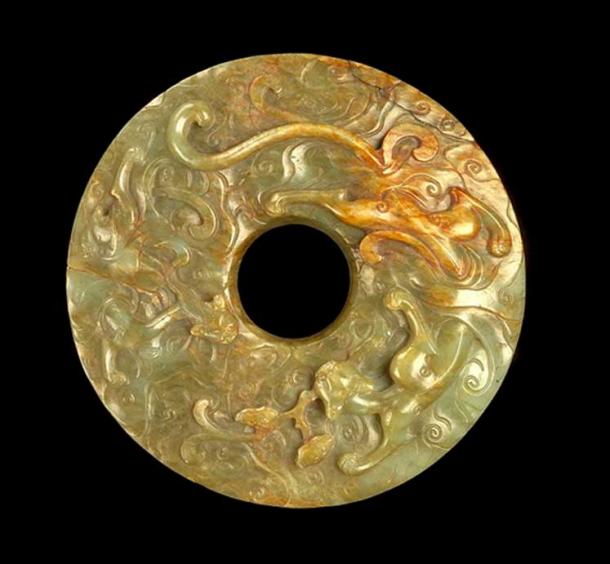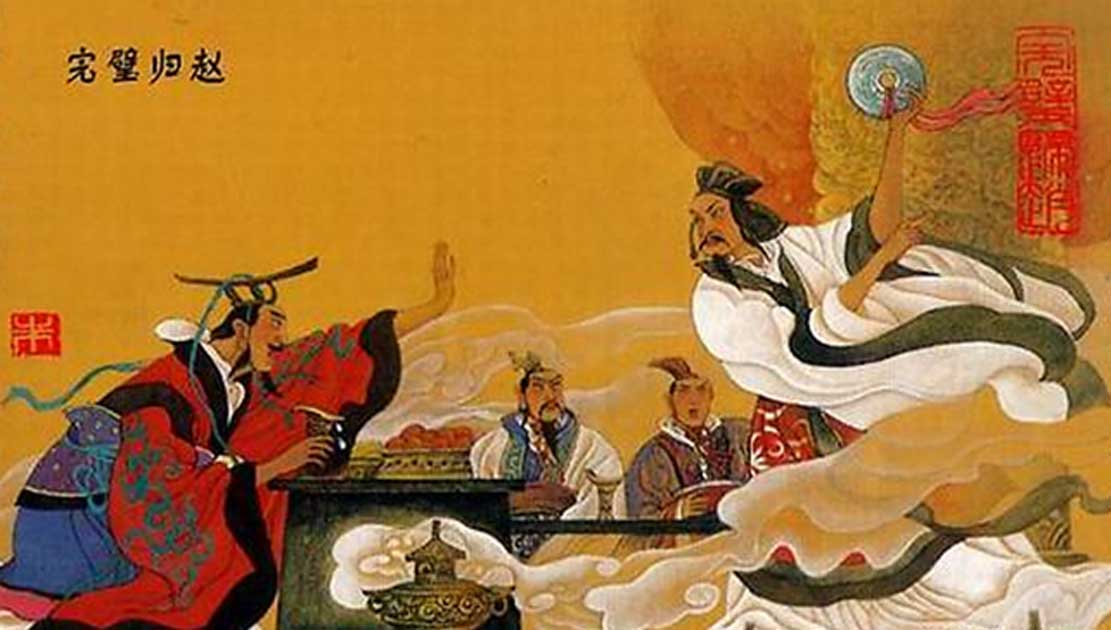The Legend of the Imperial Jade Seal of China, An Heirloom Lost in Time
Of the many renowned Chinese seals, none is more famous than the Heirloom Seal of the Realm. This artifact was carved out of the He Shi Bi jade - a stone which one man lost his feet for. The seal was created in 221 BC for Qin Shi Huang, the ruler who defeated a myriad of warring factions and unified China under the Qin dynasty. This sacred relic was passed down from emperor to emperor until sometime between 907 and 960 AD, when it mysteriously disappeared.
Throughout much of Chinese history, seals were used to mark authorship and to prove identity. Seals or stamps with specific Chinese characters were used on documents, contracts, works of art, and other important items such as proof of authenticity. The seals were generally made of stone, but sometimes they were created with wood or, for very important people, precious materials such as jade. These stamps were considered superior to signatures.

Emperor Yongzheng's seal inscribed with "Wei Jun Nan" (it is difficult to be an emperor). (cultural-china)
A Legendary Jade Stone
The Heirloom Seal of the Realm was carved from a piece of jade with a heartbreaking history of its own. According to legend, it was found sometime before 283 BC in the State of Chu (modern-day provinces of Hubei, Hunan, and part of Shanghai) by a man named Bian He. He said he found the stone containing the jade on Mount Chu.
- Elaborate Jade ‘Cong’ and ‘Bi’ as Grave Goods of the Liangzhu Culture
- Chinese civilization may have begun 2,400 years earlier than previously thought
- The Mysterious Origin of the Jade Discs
Recognizing the jade’s value, He brought it to the ruler of Chu, King Li. However, the king thought it was merely a stone and, insulted that He had wasted his time, ordered the man’s left foot to be cut off. Later, Li died and the crown passed to his son, Wu. Again, He offered the precious jade to the new king, but this monarch also thought it was just a stone. King Wu ordered He’s right foot to be cut off. When Wu died, the crown passed to his son, Wen.

Drawings depicting the legend of the He Shi Bi (The Vision Times/CC BY 4.0) and a piece of unworked jade. (Immanuel Giel/CC BY SA 3.0)
About that time, Bian He carried his jade stone to the foot of Mount Chu. There, he cried until “after three days and three nights his tears were all exhausted and blood flowed out. At this news, the king sent men out to ask him the reason, saying, ‘Throughout All-under-Heaven the men whose feet were cut off are many. Why should you be crying so bitterly?’ ‘I am lamenting not the loss of my feet,’ said He in reply, ‘but for the calling a precious gem an ordinary stone and for their dubbing an honest man a liar. This is the reason why I am lamenting.’ Impressed by He’s deeply felt emotion, King Wen ordered the royal jeweler to cut and polish the stone. Inside was the largest piece of pure jade the king had ever seen. In honor of what He had done to uncover the precious jade, King Wen called the piece He Shi Bi, which means ‘He’s Jade Disc’. (Kinney, 2003)

Example of a perforated jade disc (Bi) with Dragons. (Public Domain)
A Flaw in the Plan
This story is probably a blend of truth and legend. The fate that befell the He Shi Bi next is slightly more rooted in fact. In 283 BC, the precious jade was stolen from the King of Chu and sold to the State of Zhao. Then, the King of Qin offered Zhao 15 cities for the He Shi Bi.
Initially, the King of Zhao agreed, but later he began to think the King of Qin was deceiving him (which he probably was). Zhao thus had his jeweler say that there was a small flaw in the He Shi Bi. The representative of Qin said that he could not see any flaw. Quickly, the jeweler grabbed the jade and “threatened to break the jade, and the king’s bones, if [King Qin] tried to take the stone by force. [King Qin] was unwilling to allow the He Shi Bi to be destroyed due to his selfishness, and he decreed that it be returned to [Zhao].” (Fat Jade, 2016)

A jade imperial seal from the Qing dynasty. (CC BY SA)
The Qin dynasty would have its revenge for the humiliation they suffered. In 221 BC, the new King of Qin, Qin Shi Huang, conquered the six Warring States, including Zhao. Victorious, Qin ordered the He Shi Bi to be carved with his symbol - so the most fantastic piece of jade would forever serve as the Qin imperial seal. Legend has it that the jade was inscribed with the words “Having received the mandate from heaven, may the Emperor lead a long and prosperous life” (Fat Jade, 2016).

An 18th portrait painting of Qin Shi Huang, first emperor of the Qin Dynasty. (Public Domain)
The Lost Heirloom
From 221 BC onwards, the Heirloom Seal of the Realm, as the He Shi Bi was now called, passed from emperor to emperor, even when Chinese rule changed hands. It was honored during the Qin dynasty, the Wei dynasty, the Jin Dynasty, the Sixteen Kingdoms period, the Sui dynasty, and the Tang dynasty.
- The Whimsical Legend of How the Chinese Zodiac Animals were Chosen
- Holding Hands for 5,000 Years, A Couple with Mysterious Jade Rings and Dagger
- The Living Dead: Chinese Hopping Vampires
However, in the period of the Five Dynasties and the Ten Kingdoms (907-960), the jade seal was lost to recorded history. It may not have been physically lost at this time, but when the Ming dynasty (1368 – 1644) came to power, it was officially gone.

Empress Ci'anduanyu's grey jade seal. (cultural-china)
There are several theories as to what happened to the seal. Some say that it disintegrated when the last Tang emperor killed himself through self-immolation. Others proclaim that it remained in play until the Ming’s conquered the Mongol-led Yuan dynasty. When the Ming armies took the Yuan capital in 1369, they raided the Imperial Palace and took one of the personal seals of the Yuan emperor. However, the Yuans had 11 imperial seals and the one the Mings snatched was not the Heirloom Seal of the Realm.

Li Si Min Yin, the seal of the second Tang Emperor. (Hoffman's Far East Gallery)
Today, the Forbidden City in Beijing has 25 imperial seals - perhaps to lessen the significance of the Heirloom Seal. But the legendary artifact has not been forgotten. Every so often, there are claims that the He Shi Bi has been found – so far, all these reports have been debunked by experts.
Top Image: Illustration from the story ‘ Return the Jade Intact to the State of Zhao.’ Source: Ministry of Culture, P.R. China
References:
"Chapter XIII. The Difficulty of Pien Ho." Traditions of Exemplary Women. Trans. Anne Kinney. University of Virginia, 2003. Web. http://www2.iath.virginia.edu/saxon/servlet/SaxonServlet?source=xwomen%2Ftexts%2Fhanfei.xml&style=xwomen%2Fxsl%2Fdynaxml.xsl&chunk.id=d2.13&toc.depth=1&toc.id=0&doc.lang=bilingual
China Online Museum. "Chinese Seals." Chinese Seals | Chinese Art Gallery. China Online Museum, 2016. Web. http://www.chinaonlinemuseum.com/carving-seals.php
Fat Jade. "The Legend of He Shi Bi Jade." Fat Jade The Legend of He Shi Bi. Fat Jade, 2016. Web. http://www.fatjade.com/the-legend-of-he-shi-bi-jade/
Wertz, Richards R. "The Arts: Seals." The Cultural Heritage of China. The Cultural Heritage of China, 2016. Web. http://www.ibiblio.org/chineseculture/contents/arts/p-arts-c01s04.html


















Comments
The first emperor of China did not "defeat" the Warring States to found China. He overwhelmed them through persuasion and diplomacy. The war story is a myth created by the second - Han - dynasty. To see the facts - and the fiction read The School of Sun Tzu - Winning Empires without War. It's available on amazon dot ca.